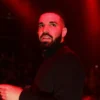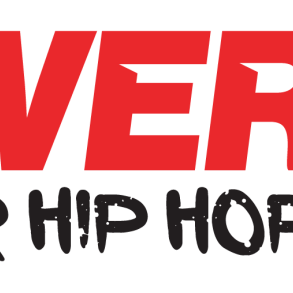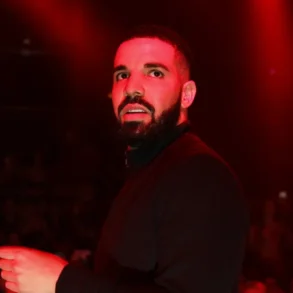View the full episode transcript.
Welcome to Hyphy Kids Got Trauma, a four-part series about the Bay Area, hip-hop culture and the significance of the year 2006.
Back then I was a baby journalist, laying the foundation for my career path and getting ready for college. I was also trying to stay out of the way of the drama, while moving in and out of traffic with my patnas.
We stayed out late, smoking, drinking and partying to no end. We found fun during hard times, and celebrated everyday as if it were our last– and honestly, it very well could’ve been.
In January of that year, an unfortunate chain of events in the neighborhood I hung out in led to a friend, Willie Clay, losing his life to gun violence.
Around that same time, a neighborhood rap star on the rise by the name of Beeda Weeda released two projects that I listened to as a reprieve from the stress of the world. And as his music helped me to cope, it did the same for Beeda, as he not only knew Will, he was one of the last people to see him alive.
As Beeda’s stock was rising, another shooting led to him relocating his studio, working with Tajai Massey of Souls of Mischief/ Hieroglyphics and opening a door to the Hiero building, a place that would allow a new generation of hip-hop artists from the community to make music.
“You hear about how the murder rate was so high, how that was like one of the worst years of Oakland,” says Beeda Weeda. “But, bruh, I had so much fun.”
If you ask anyone who was in the Bay Area and into hip-hop in 2006, I’m sure they’ll have a story for you. As Beeda Weeda told me, “‘06 was very special, bro.”
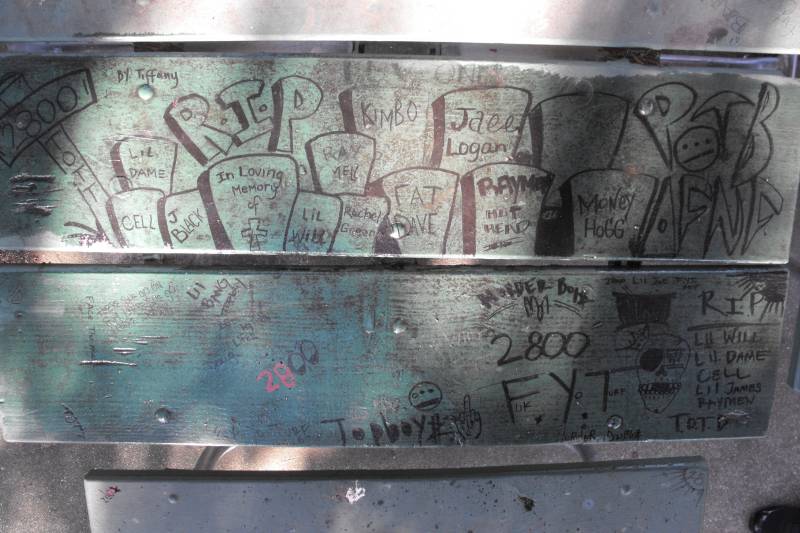
Episode Transcript
Pendarvis Harshaw, host: Heads up, this podcast contains explicit language.
[Music]
Pendarvis Harshaw: In 2006, I was 18 going on 19, one year removed from high school. And I had a front row seat to one of the most notable times in Bay Area hip-hop history– a period often referred to as “the hyphy movement”.
It was an era of uptempo-bass-heavy music, oversized airbrushed white t-shirts, candy painted cars and big-ass sunglasses — stunna shades. There was exuberant dancing, extravagant slang, and goofy party antics.
[crowd cheering]
Pendarvis Harshaw: The grand daddy was purple, the incredible hulk was green and the pills came in every color that Crayola has ever seen.
While it’s easy to get all nostalgic about the music and partying as a time of celebration and bliss, I’m here to discuss how the culture was fueled by pain. That year a reported 148 people were killed in Oakland. It’s the second highest annual homicide total the town has ever seen. And nationally it was much the same, as crime– specifically robberies in big cities– increased significantly from the year prior.
[ambient music]
I think about that, in addition to the folks who I knew who were lost to substance abuse, people who were sent to jail or prison, families who lost homes, careers that were ended, and lives that were forever changed. Yeah, there’s more to the story of “the hyphy movement” than just going stupid.
I should know, I was there.
[chatter of voices]
Pendarvis Harshaw: The date on my LG flip phone reads January 26, 2006. I’m staring at the digital screen, posted in the lobby of this fancy-ass hotel in downtown San Jose. Business casual attire means that I’m sporting the same button-up collared shirt, baggy khakis and Steve Madden shoes that I wear to funerals and club functions. But today, I’m at a journalism gala.
I’m a baby reporter, 18 years-old. The beard hasn’t connected and the hairline hasn’t receded. Folks are all dressed fancy and eating tiny sandwiches. This is journalism? I’m with my folks from New America Media’s Youth Outlook publication, a nonprofit that helps young writers get their foot into the journalism world.
I’m in the right place to be, but still kind of nervous. So in the middle of all the lobby chatter, I’m tucked off, hiding behind my illuminated screen of my phone. No games on that joint, no social media or internet browser either. I’m just messing with the ringtones and reading old text messages. And then— [phone vibrates] A new message from my patna Malcolm.
“They killed Will.”
After a quick call for further clarification, I hang up and I throw [phone cracks] my phone, quarterback Hail Mary style– chuck that muthaf—a smooth across the room. The phone was ok. I broke.
[car door slams, engine rumbles as car drives off]
[Music]
Pendarvis Harshaw: I leave the event in a drunken blur, and get a ride back to Oakland with some co-workers. Yeah, drunk at 18. But what does that mean?
I mean I’d been smoking and drinking since middle school– around the same time I met Willie Clay. We were classmates, and outside of school we kicked it at the Manzanita Center – a youth center on East 28th street in East Oakland, in a neighborhood we call the Dubs – or Murder Dubs.
Will was part of a circle of folks who hung out there, played basketball, rode scooters. Y’all remember those Razor joints? He loved those and the motorized ones, too. We used to smoke, shoot dice, rap, crack jokes. He was a funny dude who loved the neighborhood. And last we talked, he had a baby on the way.
Life changed that day, for me, and a lot of folks in my circle. And that was just one day, in the midst of a year that would bring my friends and I some of the highest highs and the lowest lows, leaving magnificent memories and deep seated scars.
[Music]
[Car engine rumbles]
Pendarvis Harshaw: A few years ago, I was bending corners around town, when I saw a couple of words written in aerosol spray on a wall underneath an overpass: “Hyphy Kids Got Trauma.” Bingo. Say less.
That’s the untold story. Our story. My story. There was a lot of pain and grief intertwined in that era. It was the catalyst for the exuberant lifestyle.
[Music]
Pendarvis Harshaw: It made us party more aggressively, gig harder, roll fatter blunts, buy bigger bottles, stunt with all four car doors open with a RIP memorial pamphlet on the dashboard of the Buick. Ecstasy pills were popped like vitamins. And goofy glasses – they masked the weight of the reality we were facing. And somehow, that’s all the outside world saw—that goofy shit.
So in this podcast, I’m going to bring you into the real meaning of the word “hyphy” and why we dance a little different. We’ll talk about where the media failed us and we’ll show you what grew out of the pain.
I’m Pendarvis Harshaw, and this is Hyphy Kids Got Trauma.
[Music]
Pendarvis Harshaw: On March 7th, 2006 legendary Oakland rapper Too $hort teamed up with super producer Lil Jon to drop the hit song, “Blow The Whistle.”
[Blow The Whistle by Too Short plays]
Pendarvis Harshaw: Stupid slap, a bass line that could awaken gargoyles, with energetic drums and a catchy hook, it was a union of Atlanta’s popular krunk sound with the Bay Area’s hyphy wave.
[Tell Me When To Go by E-40 plays]
Pendarvis Harshaw: The very next week, on March 14, 2006 legendary Vallejo rapper E-40 dropped his album, My Ghetto Report Card. The lead single, “Tell Me When to Go,” was also produced by Lil Jon and featured fan favorite, East Oakland rapper Keak Da Sneak.
The drums sounded like two kangaroos kicking the trunk of your car—the hook, simple, catchy and cool. The beat was another uptempo marriage of krunk and hyphy, and it also made for a classic track.
[Music]
Pendarvis Harshaw: Those releases were just the tip of the iceberg in a year that brought about some of the most notable hip-hop and R&B songs from my region. On a given day, I’d ride shotgun in my friend’s scraper, blasting San Francisco rappers Messy Marv or San Quinn.
We’d pull up next to a Classic Chevy van, custom designed with flatscreens in the headrests, sound system knockin’ East Bay rappers The Jacka or Bavgate, E-A-Ski or Mistah FAB. We’d pull up to an event and the DJ would be spinning one of the mega hits by The Pack or Keyshia Cole. I’d dip out early, hop the BART turnstile and put my headphones on, listening to Zion-I or Goapele.
There was a bunch of music to pull from. But for me, the track that kicked things off in 2006 was a song called “Turf’s Up” by an artist named Beeda Weeda.
[Turfs Up by Beeda Weeda plays]
Pendarvis Harshaw: Beeda Weeda is a neighborhood star, a fly dresser, but not overly flashy, a dark-skinned brotha with deep waves who knows a little bit of everybody. He’s a rapper and a producer, as well as an owner of a clothing brand and a line of cannabis.
Back in 2006, he had just released his first studio mixtape, called Homework, and a subsequent album, Turfology 101.
The album’s lead single, “Turfs Up” got radio play and the video had a slew of cameos. The remix featured an all star line-up from that era, including Too Short and E-40. The song is an uptempo, braggadocious track—something to dance to, ride to, throw your neighborhood up to. For Beeda, he was simply putting his real life on wax.
Beeda Weeda, guest: We was youngstas, we couldn’t get into the club and shit like that. So like, we would just get in the car, get alcohol, just ride through the East all day trying to knock bitches, you know what I’m saying? And just, the East was our playground. We turned it to like a club on wheels, you know what I’m saying? So that’s basically what the song was just about. I was just talking about the shit that we be doing out here. And, you know, the shit just like, took off, bro.
Pendarvis Harshaw: The album also featured a few songs that spoke to trends of the time, like rippa slippas.
[Rippa Slippas by Beeda Weeda plays]
Beeda Weeda: You remember the rippa slippas? That was the shoes that all the little females would get from the uh, beauty supply shit, the Chinese slippers, you know, I’m saying. So it was just like everything that literally was going on in the culture, I was just explaining shit, just you know, letting people know how we was getting down out here. You know what I mean?
Pendarvis Harshaw: Beeda was painting pictures of how folks were living, from partying to pimpin’, and even the more militant mindset. On his Homework mixtape Beeda Weeda dropped this one song that spoke directly to that radical ideology that so many young folks have here in the Bay. The track was simply called “We Ain’t Listening.”
[We Ain’t Listening by Beeda Weeda plays]
Beeda Weeda: That was just the energy of Oakland. Like we was the young niggas. That’s what… what our whole mentality was. We weren’t listening to shit.
Pendarvis Harshaw: A mixture of revolutionary spirit, cool player shit and mob mentality, the track exemplifies a lot of the elements that were going on at the time.
Beeda Weeda: I was just expressing, you know, what we were going through and just giving the world a light on what we got going on. Because I always felt like Oakland was different. We was different, you know what I’m saying? I knew it was something different about us. You feel me? And I kind of just wanted to share that with the world, you know what I’m saying?
Pendarvis Harshaw: He’s right, Oakland was different. It was an epicenter of culture, caught in an upwind of creativity. And in 2006, at the same time, there were plenty of reasons for young folks in the Town to ignore every single word from authority figures.
Oakland had long been under-resourced and over-policed. Families were facing predatory housing loans and rising rents. After decades of constant growth, the 2000 Census marked the last time the Black population in Oakland increased.
[Music]
Pendarvis Harshaw: I had homies move to Antioch, Las Vegas and Texas. I started seeing more white folks jogging through the hood. It was the onset of gentrification.
Mayor Jerry Brown was focused on redeveloping downtown, adding thousands of new residents and cracking down on sideshows– the illegal car shows native to the Bay Area.
[car engine rumbles and wheels screech]
Pendarvis Harshaw: I watched as downtown changed and new people came. Things shifted, but the sideshows remained. The police department, then entering the third year of a mandatory federal oversight, had its own issues.
I saw conflicts of all types: people in my family struggling financially, and people close to me going to fight in the War on Terror overseas.
[police sirens]
Pendarvis Harshaw: And personally, for me, the biggest conflict was the community violence– that left the deepest wounds. Just weeks after my friend Will was killed, Beeda Weeda released his first project and his music helped me get through that hard time—hard for me, and arguably harder for Beeda, as he not only knew Will, he was one of the last people to see him alive.
Beeda Weeda: Man, you know, I always say bro, what’s crazy is bro… I was supposed to be dead, bro.
[Music]
Pendarvis Harshaw: That day, Beeda Weeda and a crew of folks were coming back from a performance at a party in Chico, a small town about three and a half hours north of Oakland. Rich in agriculture and full of nature, it’s a college town that sits at the northern end of the Sacramento Valley, a drastic difference from Oakland.
Beeda Weeda: So we slide out there. We had hella fun, did hella promoting. And I’ll never forget how it was, like because it was hella of us from the hood that went out there… just how much fun we had, bro. We didn’t have to look over our shoulders, uh, none of that shit. You know what I’m saying?
Pendarvis Harshaw: But Beeda says that after they left and made their way back to Oakland, that energy shifted.
[Music]
Beeda Weeda: Bro, it was just like a dark ass cloud. It just got dark. And then I never forget like my um my big bro, he was in the front. He’s like, “alright, we back in the shit. You know, y’all keep ya’ll, put your head on a swivel. You know what I’m saying? Ya’ll know what time it is, you feel me?”
Pendarvis Harshaw: The crew pulled back into Oakland and Beeda kicked up at a spot in the Dubs. He gave a friend a haircut, and then he realized it was getting late and he didn’t have his car, so he called another friend to give him a ride across town to his lady’s crib.
Beeda Weeda: So my homie come pick me up. Boom, he come pick me up, take me to the West. I’m hella tired cause we were just doing hella shit, I had been up all night from being in Chico and shit, instantly pass out, right? My phone die. You feel me? So my phone go off. You know what I’m saying? I wake up in the morning, I turn my phone on. Soon as I turn my phone on my shit ringing, you feel me? [phone vibrates]
I answer it. You feel me? Like, “nigga where you at? Whoop, whoop, whoop”
I’m like, “Bro, I’m good.” And I just remember the nigga was like, “everybody dead”. I’m like, “huh, everybody dead?”
Pendarvis Harshaw: A short period after Beeda left the neighborhood, someone came to a main intersection and started spraying bullets. Five people were hit in total. Will and another brother by the name of J-Black died. Before the shooting happened, and before Beeda left the ‘hood, he saw Will on the block.
Beeda Weeda: And I’ll never forget the look on Willie’s face when I drove… like, I just looked at him. You feel me? Like I never forget that shit, you know what I’m saying? He was just standing on the corner. I don’t know, I just looked at him, you know what I’m saying, we looked at each other. I don’t know, it was weird bro. But I’ll never forget that shit. And you know, I just be trippin’ off that shit. Like you feel me? Like I coulda been– if I would’ve been up there a little bit longer, ain’t no tellin’… you know what I’m sayin’?
Pendarvis Harshaw: As all of this was happening, Beeda’s music was blowing up.
Behind the scenes he was working with Tajai of the legendary Souls of Mischief hip-hop group.
[Music]
Pendarvis Harshaw: They’re a branch of the Almighty Hieroglyphics crew– the folks who brought you the song ‘93 Til Infinity and one of the most well-known logos in hip-hop.
Tajai is a slim brown-skinned brother from East Oakland, who can get loud when it’s time. And, most times, he has a calm aura that makes sense once you learn that he’s trained in martial arts and is a full-time architectural designer.
Back in 2006, he had been in the rap game for over a decade, and was looking to put other artists on.
Beeda Weeda’s music — specifically the song, “We Ain’t Listening” — caught Tajai’s ear.
Tajai Massey, guest: It just sounded scary, like, man, oh, wow. This is… this sounds like um like, if you listen to this song, it sounds very tribal, like, hey, hey. It’s just like um when you think about rap music and you think about the stereotypes about it, it’s scary Negro music from the inner city, that song exemplified that.
Pendarvis Harshaw: Tajai says that fear factor was a driving force that made the song powerful.
Tajai Massey: Like, like obviously it was music, but it was scary. And that’s, I think, what I liked about it. You know, I’m saying I felt like a suburban kid, almost like, “what is this? Oooooooh! This is what those Negroes are talking about in the… in the inner city.” You know what I mean though?
Pendarvis Harshaw: You say scary, but you say it with a smile on your face.
Tajai Massey: Oh, yeah, I mean because I’m, I’m Black and I’m from the inner city like, so I know it’s just young niggas letting off steam musically. You feel what I’m saying though? But that’s really what Hip Hop is in general, rapping, like we just rapping, you know what I’m saying? So to me, it exemplified the same… the same feeling that maybe, you know, Raising Hell or Rock Box or something, “dun, nuh-nuh-nuh,” you know, or uh it’s “like a jungle sometimes.” Like, it exemplified that spirit of there’s a whole other world out here that you are not being exposed to, and we’re going to make it sound beautiful over music.
Pendarvis Harshaw: A few weeks after the release of Beeda’s first project, there was another shooting in the Dubs. Bullet holes rattled Beeda’s custom designed van. No one was injured, but the shooting left holes in the image of Beeda’s album cover that wrapped the vehicle.
The incident pushed Beeda, Tajai, and Beeda’s manager, J.Moe, to put a plan into play.
Tajai and the Hieroglyphics crew own a building in East Oakland, a few miles from the Dubs. Tajai invited Beeda to start using that space as his homebase, and once Beeda had a foot in the door, he started bringing in other artists from the community.
Beeda Weeda: Once Tajai started seeing the talent, he coulda been on some like ‘nah Beeda you doing too much,’ you feel me, ‘like, just you.’ He opened up the whole motherf—-n’ downstairs for us and was like f— it, ya’ll can have this shit down here, you know what I’m saying? And, like, that whole situation, like, basically sparked a lot of careers.
Pendarvis Harshaw: Tajai saw the Hiero building as more than just a recording studio for the East Bay’s emerging talent. It was almost like an anti-violence initiative.
Tajai Massey: I mean, literally, this place was so active that crime went down in the Dubs. You feel what I’m saying though, because all the criminals was here recording records, you know what I’m saying though? Like forreal though, you know what I’m saying though? I mean you know, all the factors was in here making music you know what I’m saying though?
Pendarvis Harshaw: The roster of folks who came through those doors and made music and or contributed to the culture included Philthy Rich and DJ Fresh, Moses Music, Big Hongry, and J. Stalin.
Shady Nate, Tower, and the late Zoe Tha Roasta. It’s where a few years later D-LO would record and film the video for his anthem, “No Hoe.”
It’s where I would eventually work with Jamon Dru and Young Gully to record the Grant Station Project, dedicated to Oscar Grant.
It was these artists who’d contribute to Bay Area hip-hop for the next decade-plus, making hyphy songs as well as mobb music, underground hits, selling thousands of records and rocking shows across the country. These were dudes from the neighborhood, making music to express pain, celebrate life and document culture.
But nationally, that wasn’t the narrative. The way the Bay Area culture was being depicted wasn’t exactly what was really happening on the streets. Yes, there were some goofy dances and some funny fashion. But man, it was so much deeper than just going dumb on top of cars.
If you ask Tajai, that rebellious hyperactive energy is really in our DNA.
Tajai Massey: Mean mugging and all that kind of stuff and you know what I’m saying shaking your dreads and all that.
To me it was a very African vibe, you know, I’m saying though? Dancing hard, you know what I’m saying though? Very, very within the lineage of the diaspora, like you know what I’m saying though?
Pendarvis Harshaw: I could see that. I could see that.
Tajai Massey: Kind of like how breakdancing is or popping or all that kind of stuff, right?
Pendarvis Harshaw: Yeah.
Tajai Massey: So to me it was more tribal like and this how our, these are tribal dances that we do out here in the Bay where we are the hyphy tribe.
Pendarvis Harshaw: And the people of that “hyphy tribe,” we were at war, fighting against club security and local police, fighting against East Coast hip-hop biases, and corporate run-radio stations and culture vultures, fighting against other community members, and sometimes even fighting against ourselves.
We’re talking about a generation of kids who were born into the crack-cocaine induced era of the War on Drugs, and raised by people who saw Civil Rights leaders slain. There were already issues here, as Tajai reminds us:
Tajai Massey: The trauma pre-existed the hyphy movement, and I think the hyphy movement helped to free up and help people to unpack or at least evade a little bit of the trauma.
[Music]
Pendarvis Harshaw: We didn’t know it at the time, but that “unpacking” of generational trauma, was unfettered joy while dancing off a pill at a gas station, or driving on the wrong side of the road while listening to your favorite song at a high volume.
For me, it was smoking and drinking as if everyday were the weekend. It was pills and syrup. It was parties. It was riding around with my patnas, hanging out of the sunroof of this plum colored Sebring that I got from an auction–having fun, despite all of the danger and despair.
Maybe we were numbing ourselves to get through the trauma. Maybe the hyphy movement kept us alive. Whatever the case, the dichotomy of that era, specifically the year 2006, left a mark that I can never erase. And I’m not the only one, just ask Beeda.
Beeda Weeda: You hear about how the murder rate was so high, how that was like one of the worst years of Oakland but, bruh, I had so much fun. Like, like it didn’t seem like that, you know what I’m saying? It didn’t seem like I was around all that. You know what I mean? It just seemed like a lot of love. Like, yeah, we had our ups and downs, we was broke you know what I’m saying? But we didn’t care. We all took care of each other. ‘06 was very special, bro.
Pendarvis Harshaw: Maybe it was that contrast that created the fun, how life and death happened all at once. It made it memorable for us. And unfortunately, only a portion of the story was told, until now.
On the next episode, we go deeper into community and culture, the year ‘06, and why we dance a little different.
Jeriel Bay: We’re not Hyphy dancers. Hyphy was kind of like the energy, the… the spirit, the movement. But, you know , turfing is how we was able to separate ourselves from the energy, you know, we was turf dancing. We wasn’t hyphy dancing.
Pendarvis Harshaw: This is Hyphy kids Got Trauma.
Hosted by me, Pendarvis Harshaw
Produced by Maya Cueva
Edited by Chris Hambrick
Sound designed and mixed by Trackademics
With support from
Eric Arnold, Jen Chien, Holly Kernan, Victoria Mauleon, Marisol Medina-Cadena, Gabe Meline, Xorje Olivares, Delency Parham, Cesar Saldaña, Sayre Quevedo, Katie Sprenger, Nastia Voynovskaya, and Ryce Stoughtenborough.
This project was produced with support from PRX and is made possible, in part, by a grant from the John S. and James L. Knight Foundation.
And this is a part of KQED’s That’s My Word project, a year-long exploration of Bay Area Hip-Hop history. Find more at BayAreaHipHop.Com
RIP Will, J-Black and so many more.
Until next time, peace.

Rightnowish is an arts and culture podcast produced at KQED. Listen to it wherever you get your podcasts or click the play button at the top of this page and subscribe to the show on NPR One, Spotify, Apple Podcasts, TuneIn, Stitcher or wherever you get your podcasts.
This post was originally published on this site be sure to check out more of their content.



